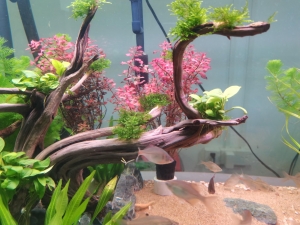When it comes to roping, choosing the right saddle can make all the difference between a clean catch and a missed opportunity. Your saddle isn’t just any piece of equipment; it’s the foundation of your roping performance. With so many options on the market, how do you know which one is the perfect fit?
Here are some important factors to consider when selecting a saddle best for roping success.
1. Prioritize Fit for Both Horse and Rider
The first step in choosing a roping saddle is ensuring it fits both you and your horse. A poorly fitted saddle can cause discomfort, injury, and unreliable performance. The saddle should distribute weight evenly across your horse’s back. Look for a tree that matches your horse’s build and provides enough clearance for their spine and withers.
Your comfort is equally important. The seat size must suit your body shape, allowing you to maintain balance and control while roping. Most roping saddles range from 14 to 16 inches, but always test options for the best fit.
2. Choose High-Quality Materials
Roping saddles are exposed to strain and wear, so investing in durable materials is a must. Leather saddles are the gold standard; their toughness and flexibility make them ideal for performance and longevity. Look for saddles made from thick, quality leather with proper stitching. A heavy-duty, reinforced tree is also essential, as it will endure the stress of roping without cracking or warping.
3. Assess the Saddle’s Rigging
Rigging refers to the way the saddle is secured to your horse. For roping, the rigging must keep the saddle firmly in place to handle the weight and force of a roped steer. Most ropers prefer double rigging because it provides added stability during high-pressure situations. Make sure the rigging hardware is made of rust-resistant metal to ensure durability over time.
4. Evaluate the Horn and Swells for Performance
The saddle horn is a critical component of any roping saddle, as it’s where you wrap your rope after a catch. Ensure the horn is sturdy and reinforced to withstand high tension. Additionally, the swells should provide a solid grip for the rider, improving balance during sharp turns or sudden pulls.
Understanding the parts of a lasso, such as the hondo, body, and tail, is also essential for mastering your roping technique. Together, the saddle and lasso create a seamless system that supports your success.
5. Test for Seat Comfort and Padding
You’ll spend hours in your saddle, so comfort is nonnegotiable. Look for a seat with adequate padding that provides support without compromising your ability to move freely. Many roping saddles offer a deep seat design, which holds you securely so you can maintain your balance during rigorous activity.
6. Don’t Forget the Aesthetic Appeal
While performance and functionality take priority, there’s no harm in selecting a saddle that looks great, too. Many roping saddles feature intricate tooling, silver accents, and high-quality finishes that can reflect your personal style. A beautiful saddle doesn’t just enhance your confidence; it solidifies your connection to the ranching tradition.
Saddle Up for Roping Success
Selecting the best saddle for roping doesn’t have to be overwhelming. With the right knowledge and guidance, you can find a saddle that meets your needs and helps you achieve success in the roping arena. Take the time to try out different options to ensure you make the best choice. A well-chosen saddle can give you the confidence and support you need to perform at your best.






